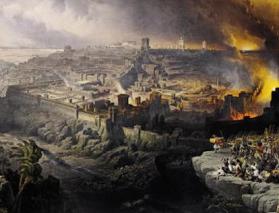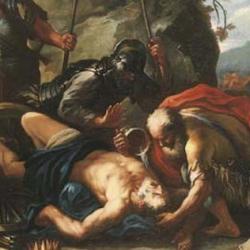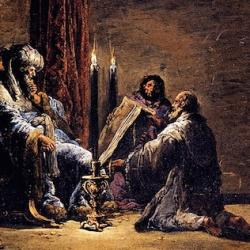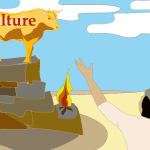1 Chronicles 27:25–31 lists the officials in charge of David’s stores and lands. Twelve men are named and each has an area of responsibility:
1. Azmaveth, king’s treasuries, v. 25a
2. Jonathan, treasuries in the field, v. 25b
3. Ezri, supervisor of field workers, v. 26
4. Sheim, vineyards, v. 27a
5. Zabdi, treasury of wine, v. 27b
6. Baal-hanan, olive and sycamore trees, v. 28a
7. Josah, treasury of oil, v. 28b
8. Shitrai, herds in Sharon, v. 28a
9. Shaphat, herds in valleys, v. 28b
10. Obil, camels, v. 30a
11. Jehdeiah, donkeys, v 30b
12. Jaziz, flocks, v. 31
Most of these supervisors or foremen are paired: Azmaveth is in charge of the treasury of the capital city (“the king’s treasury”), but there are royal treasuries and storehouses in every region of the land, and Jonathan oversees this. Shimei is in charge the vineyards, but he is not in charge of the finished product, wine—Zabdi is. Olive trees and oil are likewise split between Baal-hanan and Joash. The allotment of responsibility divides phases of production; farming is a distinct subdivision from wine- and oil-making. At the same time, the division of labor splits production from storage and distribution; one group under Shimei cares for the vines and grapes, while Zabdi’s crew makes wine, stories it, and, presumably, determines where it goes when.
Animal husbandry is also doubled, for less obvious reasons. Bovine herds divided between those on Sharon and those in the valleys. Camels and donkeys—both unclean animals used for heavy work—seem to form a pair. Only Ezri, foreman of “servants of the adamah,” and Jaziz, overseer of ovine flocks, work solo.
These twelve supervisors and their subordinates are engaged in an Adamic task of dominion. Ezri is over those who “serve the ground” (la’avodat ha’adamah) and work in the “field” (sadeh). Adamah takes us back to the creation account. Adam was commissioned to “serve” (abad; Genesis 2:15) the garden, and the phrase “serve the ground” appears several times early in Genesis (2:5; 3:23; 4:2; cf. 9:20, where Noah, the “man” [‘ish] of the ‘adamah, is the first to plant a vineyard). Further, 1 Chronicles 27 works within the frame of Days 3 and 6 of creation. Vines and fruitful trees appeared on Day 3, and on Day 6 God made land animals. David has both clean (herds and flocks) and unclean (camels and donkeys) on his land, a signal of his authority over both Israelite and Gentile.
David’s arrangement of his agricultural lands is a concrete illustration of Israel’s devotion to Yahweh as a kingdom of priests. Of course, the produce of David’s lands supplies the court and the army; but the army is the host of Yahweh, devoted to fighting His wars and protecting the land of His house. More directly, the king’s lands supply materials for temple worship: Grain for tribute offerings, wine for libations, oil for the lampstand, herd and flock animals for sacrifice and feasts, unclean animals to transport the goods from the field to the city to the temple.
1 Chronicles portrays a nation of worshipers, of sacred housekeepers. It portrays an entire new-Adamic kingdom liturgically arranged.















